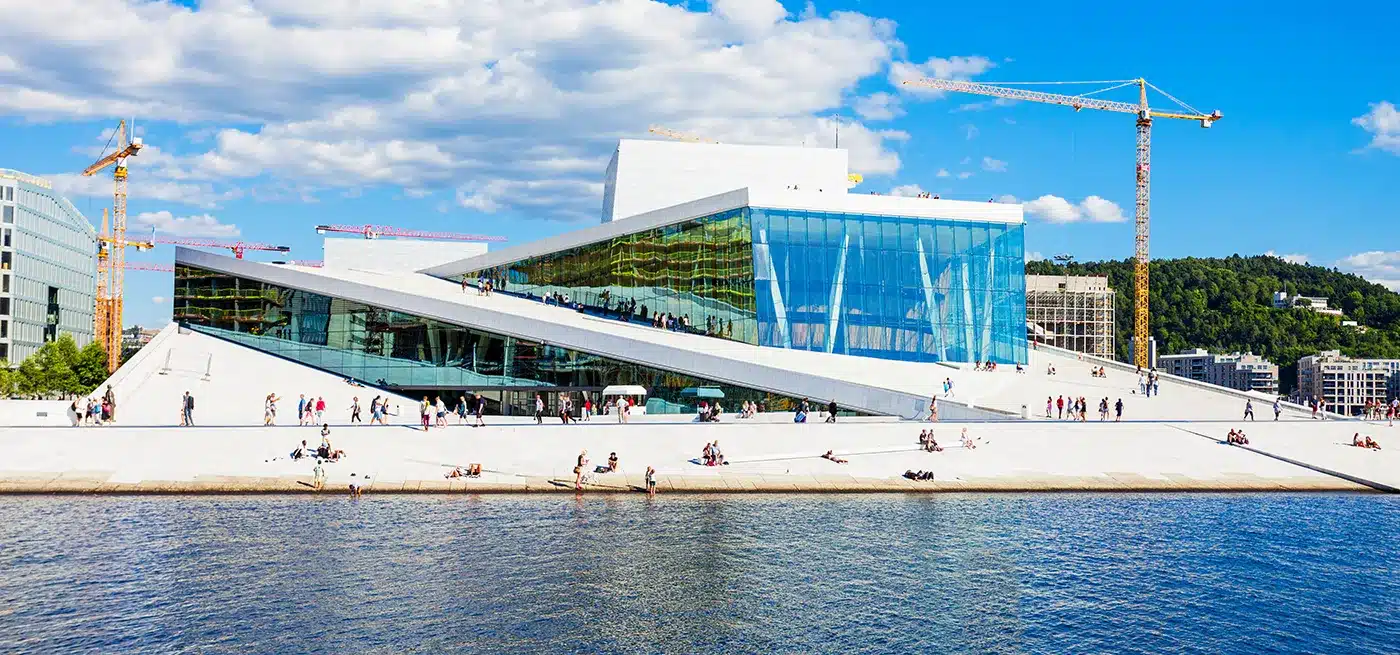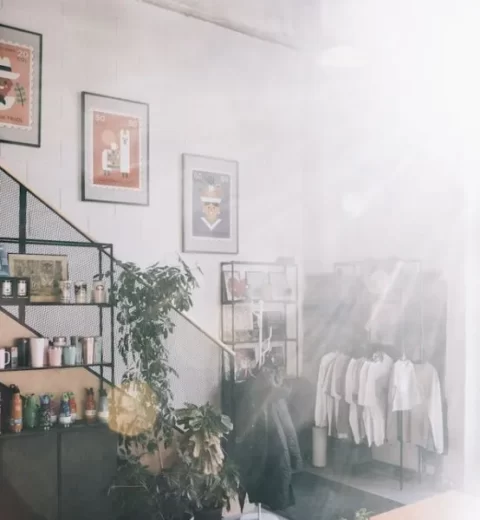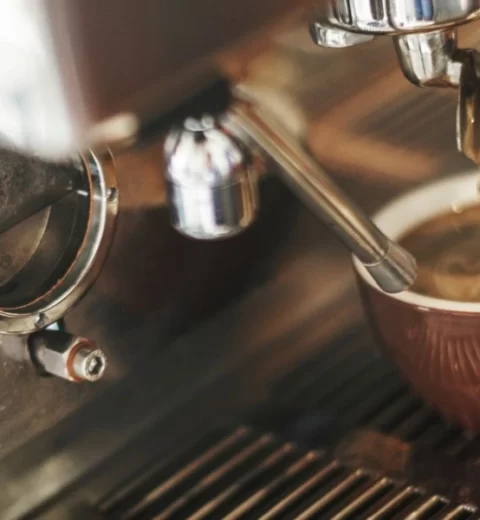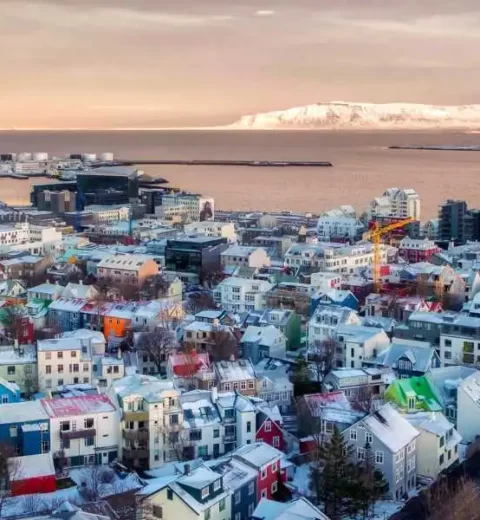Estimated reading time: 11 minutes

Oslo, the capital of Norway, is a chill, beautiful and vibrant destination for tourists from all over the world. The city is famous for its, minimalistic, modern and stunning architecture and breathtaking scenery and elevation. However, getting in and out of Oslo can be a bit overwhelming for first-time visitors. This guide aims to lay out on how to visit Oslo, Transportation system, attractions and things to do. And to get a broad idea of what to expect when visiting the City.
Table of contents
Getting to Oslo
There are several ways to get to Oslo, including air, train, bus, and car. The Oslo Airport, also known as Gardermoen, is the main international airport in Norway. It is located 47 km northeast of Oslo. The Oslo airport is connected to the city by a high-speed train, which takes approximately 20 minutes to reach the central station. Alternatively, visitors can take a bus or taxi to reach the city.
For those traveling by train, the Oslo Central Station or ‘Oslo S’, is the main railway station in the city. With direct connections to other major cities in Norway like Bergen and neighboring countries. Similarly, there are several bus companies that offer services to Oslo from different parts of the country.
If you prefer to drive, Oslo is well-connected to other cities in Norway through the E6 highway. However, remember that parking can be very expensive in the city, and traffic can be heavy during rush hour. Therefore, it is recommended to use public transportation instead of driving in the city.
Getting Around Oslo
Oslo has a well-developed public transportation system, which includes buses, trams, and metros. The easiest and most cost-effective way to use public transportation is by purchasing a Ruter ticket, which allows unlimited travel within the city’s zones for a specified period.
In addition to public transportation, taxis are also readily available in Oslo. Visitors can hail a taxi from designated taxi stands or use a taxi app to request a ride. However, keep in mind that taxi fares can be expensive in Oslo, especially during peak hours.
For a more active way of getting around, visitors can also rent a bike. Bike rental shops are available throughout the city, with rental fees starting from around 100 NOK per day. However, be sure to follow the city’s bike regulations and safety guidelines.
VY
Vy is one of Norway’s largest transportation companies, providing a wide range of travel options to passengers throughout the country, including Oslo. The company operates trains, buses, and trams, making it easy for travelers to get around the city and beyond. Vy offers several ticket options, including single tickets, day passes, and season tickets, as well as discounts for students and senior citizens. The company also has a mobile app that allows passengers to easily purchase tickets and check schedules on the go. In addition to traditional transportation options, Vy also offers several eco-friendly alternatives, including electric buses and hybrid trains. Whether you’re going to work or exploring the city as a newbie, Vy provides a convenient and reliable transportation option for travelers in Oslo. You check everything from prices to schedules at www.vy.no
Main Attractions
Vigeland Sculpture Park


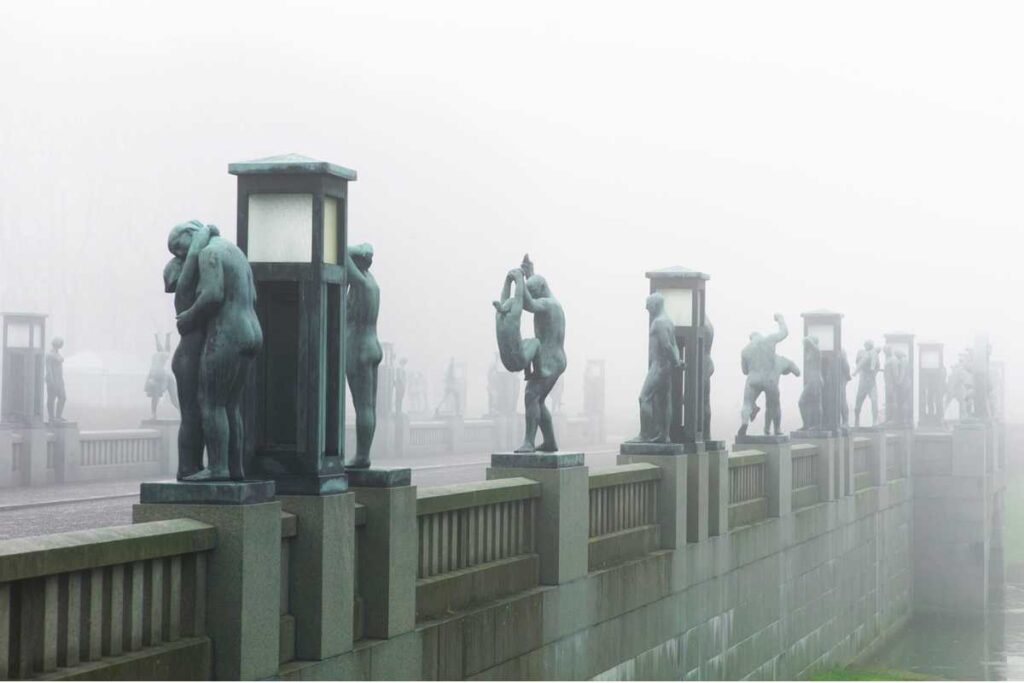
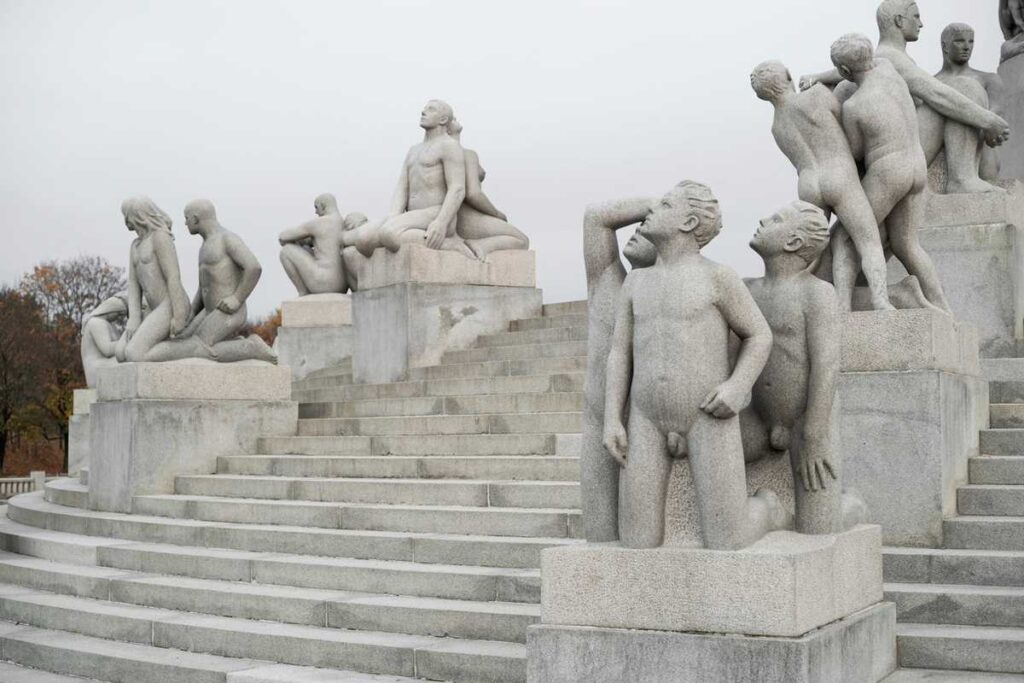

This park is home to over 200 bronze, granite, and cast-iron sculptures by Gustav Vigeland. It’s a great place to take a walk and admire the unique and often thought-provoking sculptures.
Oslo Opera House
The Oslo Opera House is an iconic modern landmark located in the Bjørvika neighborhood of Oslo. Designed by the Norwegian architectural firm Snøhetta, the Opera House opened in 2008 and quickly became one of the city’s top attractions. The building’s unique design features a sloping roof that doubles as a public plaza, providing stunning views of the harbor and the city skyline. Inside, the Opera House is home to the Norwegian National Opera and Ballet, and offers a wide variety of performances throughout the year. You can also take a guided tour of the building to learn more about its design and history, or attend one of the many performances offered.
Karls Johans Gate
Karls Johans Gate is a vibrant street in the heart of Oslo that is not to be missed. This pedestrian-friendly street stretches from the Royal Palace to the central train station, and is lined with shops, cafes, and restaurants. It’s a popular and main spot. It is particularly lively during the summer months when outdoor seating spills out onto the sidewalks. In addition to the shopping and dining options, Karls Johans Gate is also home to some of Oslo’s most iconic buildings, including the Norwegian Parliament Building, the National Theatre, and the University of Oslo. Visitors can stroll along the street, take in the sights, and stop at one of the many cafes for a coffee or snack. It’s also a great place to spend an afternoon and soak up the energy of the city.
Ekeberg
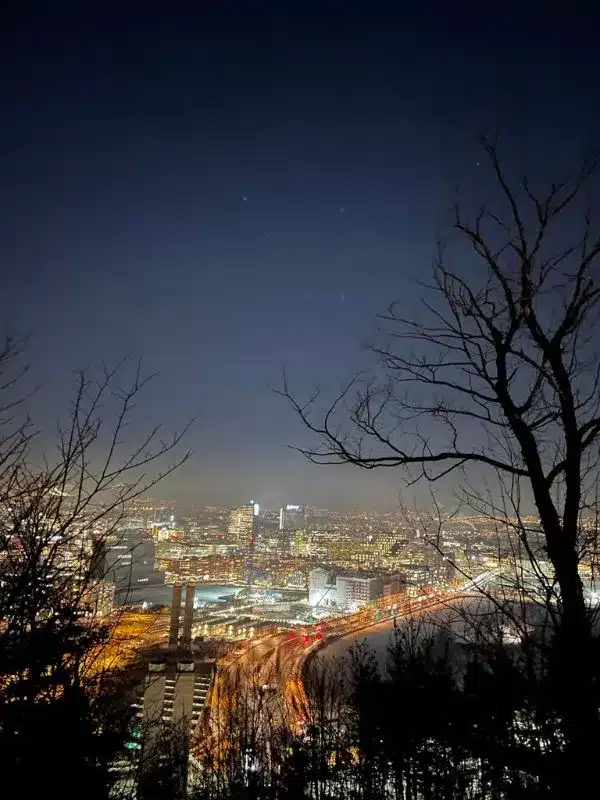
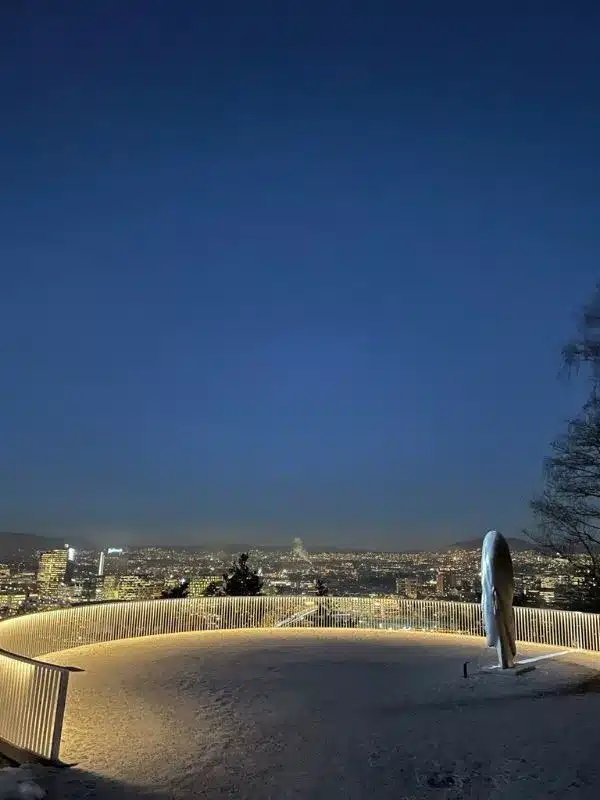
Ekeberg is a scenic neighborhood in Oslo that offers gorgeous views of the city and the Oslofjord. Located just east of the city center, Ekeberg is a popular space for outdoor enthusiasts and nature lovers. The area is home to several hiking trails, including the Ekebergåsen Trail, which winds its way up the hillside and offers panoramic views of Oslo. Ekeberg is also home to the Ekeberg Sculpture Park, which features over 30 sculptures by renowned artists from around the world. The park is open year-round and is a must-visit for art lovers. In addition to the hiking trails and sculpture park, Ekeberg is home to several restaurants and cafes, including the Michelin-starred Ekebergrestauranten, which offers fine dining with a view. Whether you’re looking for outdoor adventure, art and culture, or simply a place to enjoy the view, Ekeberg is definitely worth a visit when in Oslo.
Munch
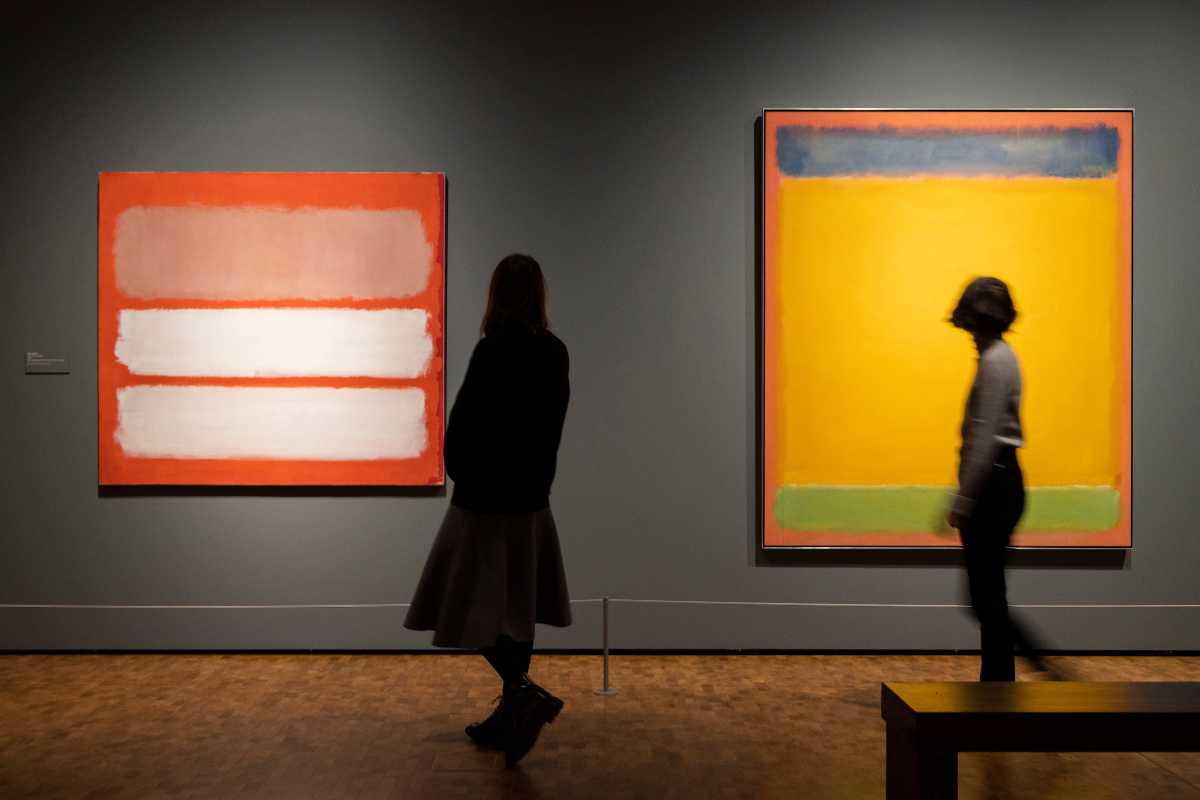
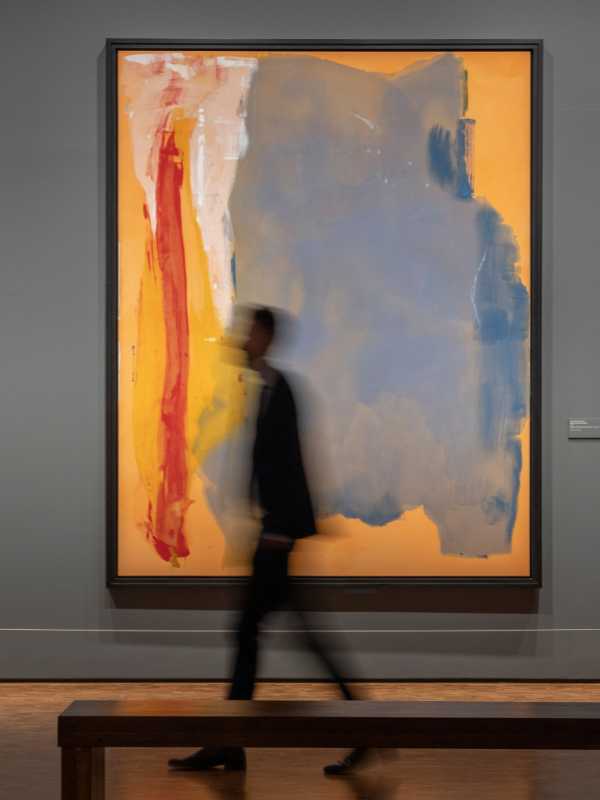
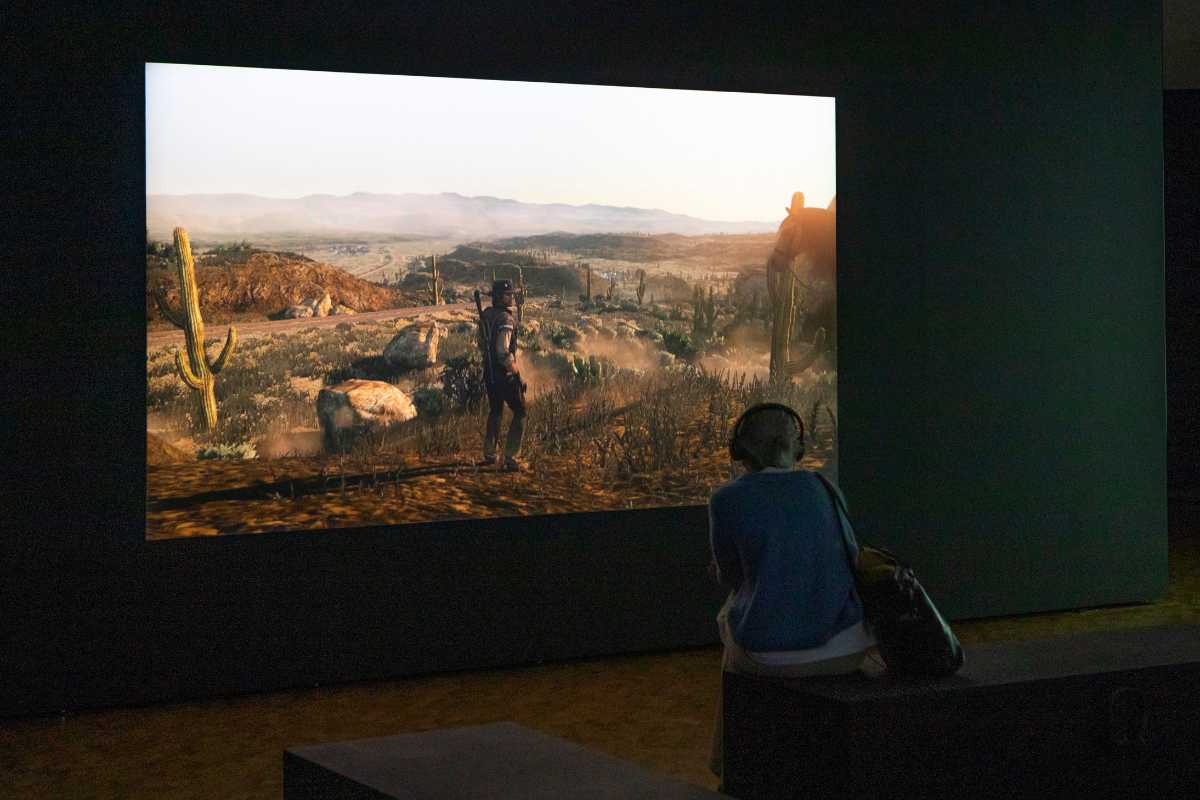
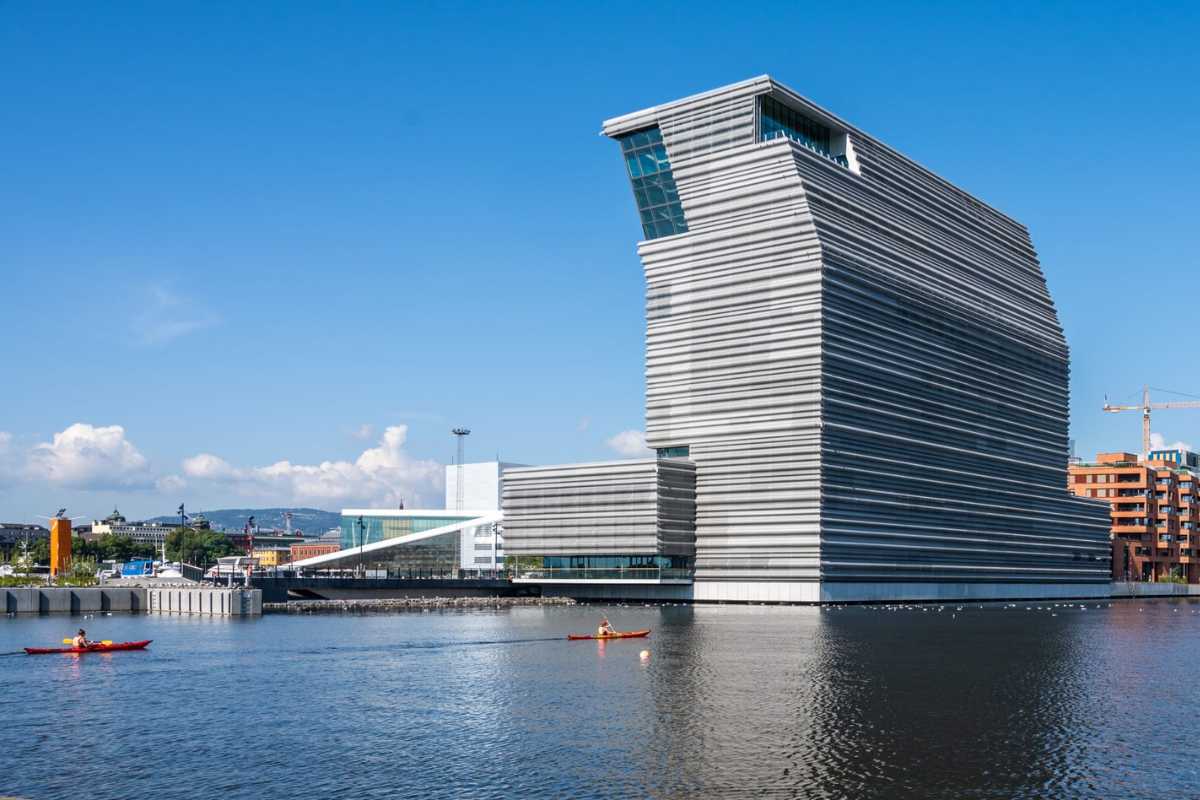
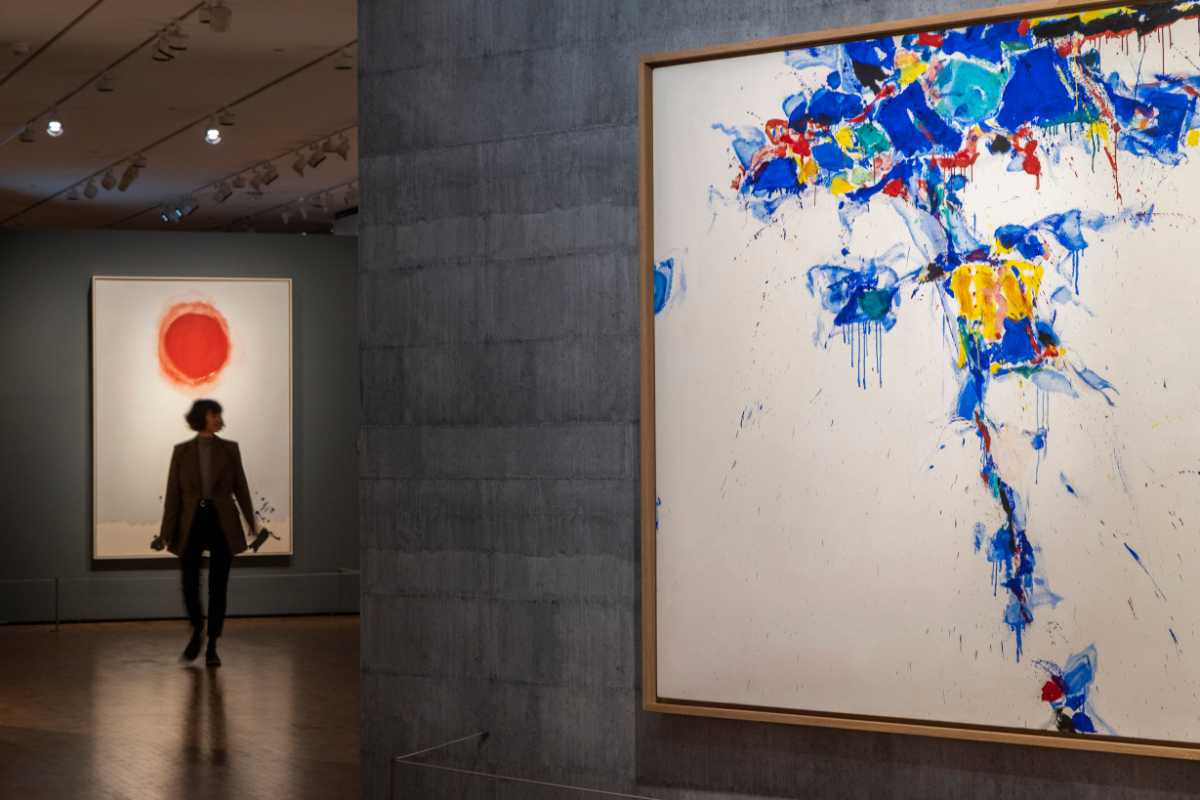
The Munch Museum is a must-visit destination for art lovers in Oslo. The museum is dedicated to the life and work of the Norwegian artist Edvard Munch, and houses over 28,000 of his works, including the iconic painting “The Scream”. The museum offers visitors the chance to explore Munch’s life and artistic career through a range of exhibitions and displays, and also features works by other artists who were inspired by Munch’s unique style. The museum’s location in the trendy neighborhood of Grünerløkka makes it a popular destination for both tourists and locals alike. The museum also hosts temporary exhibitions throughout the year, covering a wide range of artistic styles and themes. Visitors can also attend lectures, workshops, and other events related to Munch and his work. So if you’re an art enthusiast or simply looking for a cultural experience in Oslo, the Munch should be on your list.
Oslo Neighborhoods
Grünerløkka
Grünerløkka is known for its vibrant street life and creative scene. It’s home to many trendy bars, cafes, and shops, making it a popular spot for young people and artists. In Grünerløkka, you can find everything from vintage clothing stores to independent bookshops and art galleries. Some of the best shopping in Grünerløkka can be found on the street of Markveien, where you’ll find many unique shops and boutiques.
Majorstuen
Majorstuen is a wealthy and upscale neighborhood that’s popular among both locals and tourists. It’s known for its beautiful parks, including Frogner Park and Vigeland Park, as well as its high-end shops and restaurants. In Majorstuen, you’ll find many luxury fashion brands such as Louis Vuitton and Gucci, as well as designer furniture stores and gourmet food shops.
Frogner
Frogner is a picturesque neighborhood located in the western part of Oslo. It’s known for its elegant architecture, beautiful parks, and upscale shops and restaurants. Some of the best shopping in Frogner can be found on the street of Bygdøy Allé, which is lined with designer boutiques and high-end fashion stores.
Gamle Oslo
Gamle Oslo is a historic neighborhood located in the heart of Oslo. It’s home to many of the city’s most famous landmarks, including the Oslo Cathedral and the Old Town. Gamle Oslo is also known for its diverse range of shopping options, from vintage stores and antique shops to modern boutiques and bookshops.
Shopping in Oslo
In addition to the neighborhoods mentioned above, Oslo has many great shopping destinations. Some of the best places to shop in Oslo include:
- Karl Johans Gate: This is Oslo’s main shopping street and is lined with many popular stores, restaurants, and cafes.
- Oslo City
- Aker Brygge
- Mathallen Oslo
Language, Currency, and Weather in Oslo
The official language of Oslo is Norwegian, although English is widely spoken and understood. The currency in Oslo is the Norwegian Krone (NOK), and credit cards are widely accepted. The weather in Oslo is generally cool and temperate. With average temperatures ranging from around 15-20 degrees Celsius (59-68 degrees Fahrenheit) in the summer. And also around -5 to 5 degrees Celsius (23-41 degrees Fahrenheit) in the winter. It’s also very important to bring warm clothing and waterproof gear if visiting during the colder months.
Nightlife and Alcohol in Oslo
Oslo’s nightlife scene offers a diverse range of options for locals and tourists alike. The city is home to a variety of bars, clubs, and music venues, catering to a range of tastes and preferences. The trendy neighborhoods of Grünerløkka and Grønland are particularly popular destinations if you are looking for a night out, with a variety of bars and pubs lining the streets. You should be aware that alcohol is heavily taxed in Norway, and drinks can be quite expensive compared to other countries.
The best time to visit Oslo depends on your preferences. Summer is popular for outdoor activities and festivals, while winter offers the chance to experience Northern Lights and Winter Swimming.
It depends on your country of origin. Citizens of many countries can enter Norway without a visa for short-term stays, while others may need to apply for a visa in advance.
Oslo is generally a safe city to visit, with low levels of crime and a high standard of living. However, visitors should still exercise caution and take normal safety precautions.
Traditional Norwegian foods include lutefisk, rakfisk, reindeer stew, fish soup, gravlaks, and spekeskinke.
While Norwegian cuisine is known for its meat and seafood dishes, there are also vegetarian and vegan options available at many restaurants, such as roasted root vegetables, mushroom dishes, and grain-based salads.

